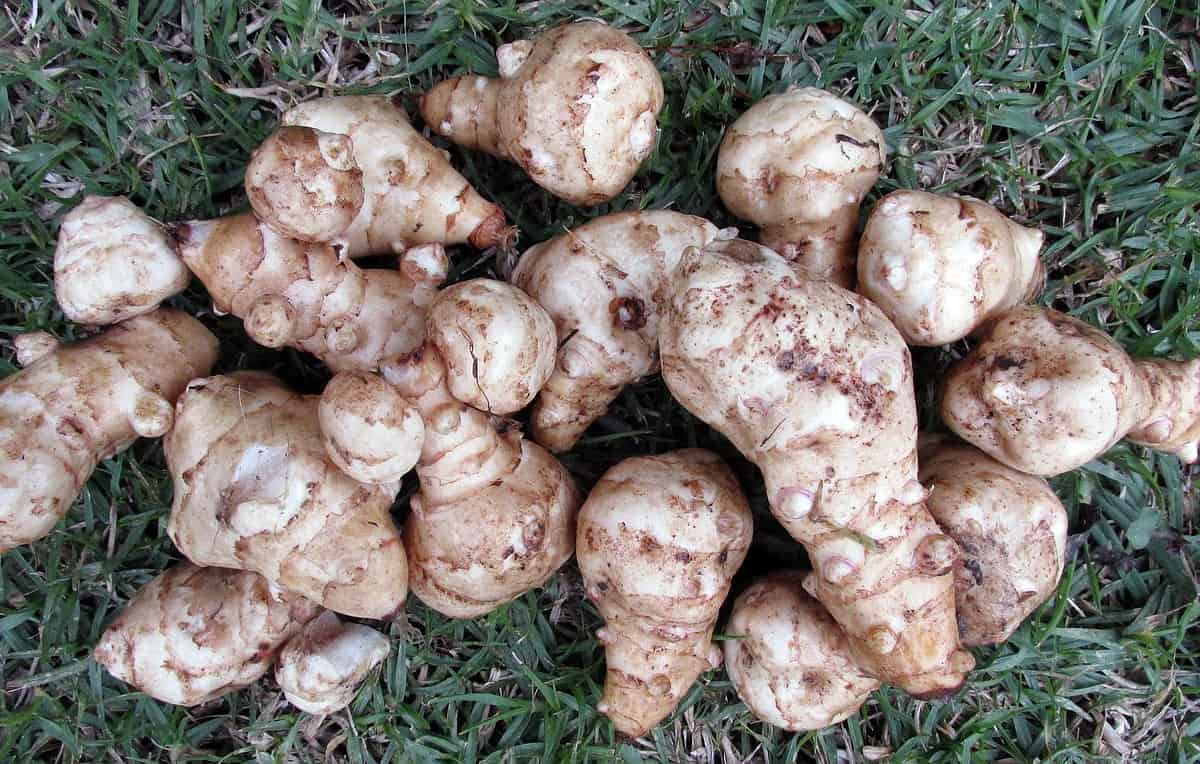Here’s a crop for the home garden that’s a gourmet delight: sunflower artichoke (Helianthus tuberosus), commonly known as Jerusalem artichoke.
This plant is actually a native American perennial sunflower of the aster family, and is by no means an artichoke. However, the cooked tuber of the plant has a starchy, nutty flavor slightly reminiscent of artichoke – at least that’s how I suspect it got its common name. Recently, the shorter name “sunchoke” has been used in supermarkets. The plant can be hard to find in Costa Rica, and as far as I know there’s no common name in Spanish. Calling it “girasol alcachofa” would probably be appropriate.
The tubers can be diced raw and added to salads or served as bocas, and taste much like crisp water chestnuts. They can also be sliced and steamed or stir-fried along with other veggies.
In addition to having a pleasing nut-like flavor, sunchokes are nutritious; they are one of the few vegetables that supply pantothenic acid, one of the B vitamins, and because they have no starch and store their sugars as levulose, they make an ideal food for diabetics. They also contain vitamins A, B1, B2 and C, as well as calcium, phosphorus and iron.
We have been growing sunchokes for many years in our garden and have enjoyed the tasty and nutritious tubers as a special treat. I’d suggest this plant for gardeners who live in the cooler regions of the country, as its original habitat is North America. Hotter weather tends to stunt these plants and limit their production.
Sunchokes like an abundance of rainfall for optimal growth. During the dry season, the plants go dormant, at which time you can harvest the tubers and use the small ones to start a new generation of plants.
These young tubers can be planted in small pots or recycled containers in the greenhouse, where they can be watered and nursed along until the rains begin again. Then, the young sunchokes can be transplanted out to the garden. They prefer full sun and fertile soil for good growth and production, and should be kept weed free as they grow.
It’s a good idea to plant sunchokes around the edges of the main garden, as it takes about five to six months before harvest, and the plants can interfere with quick crops such as lettuce and tomatoes.
The sunchoke is surprisingly hardy and requires little extra care. Adding worm compost and compost tea around the base of the plants during their growth gives them more vigor and increases productivity.
Once the harvest begins, small amounts of tubers can be harvested around the base of the plants for weekly use. They should be washed well and stored in the refrigerator. Ants seem to be the biggest problem when the plants begin to dry up during dry season. That’s why we harvest them at this time and start new plants.

